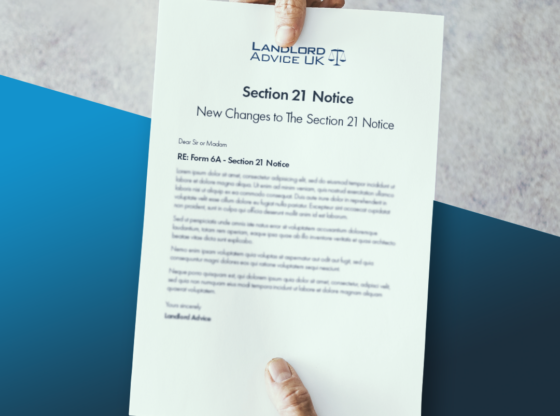This Possession Claim Guidance 2021 provides for the temporary court procedures for possession being extended from 28 March 2021 to 30 July 2021. These changes were only announced, without any advanced notice on 29 January 2021.
Due to the current pandemic the courts are dealing with a large backlog of cases and temporary measures have been introduced to assist the courts in these unprecedented times. This Possession Claim Guidance 2021 is intended to ensure landlords understand the amended procedure to obtaining possession of property based on rent arrears and enforcement of judgements.
The Government are encouraging parties to find alternative means of resolving disputes. If you cannot reach an agreement with the tenant, you can still issue a claim for possession. Until the 30 July 2021 you must provide a statement setting out how the tenant has been affected by the coronavirus pandemic (and their dependents if any) and further information on the tenant’s financial position. If this is not provided the court may not progress your case.
If possession of property is required during the fixed term of an assured shorthold tenancy, as opposed to at the end of the term, the landlord must serve a Section 8 Notice specifying one of the fault-based grounds set out in Schedule 2 to the Housing Act 1988 or by relying on the no-fault eviction ground, section 21 of the Housing Act 1988..
A claim for possession of property can also include a claim for outstanding rent which is a procedure commonly used by landlords when a section 8 notice is served on a tenant based on the non-payment of rent.
If the landlord wishes to obtain possession of the property at the end or after the end of the fixed term and does not wish to pursue any other claim, such as a claim for rent arrears, the landlord may use the “accelerated procedure”.
This guidance is concerned with claim for possession of property based on rent arrears.
Due to Covid-19, the Government are strongly encouraging parties to find alternative means of resolving disputes for example, agreeing a rent payment plan, or using a mediation service. Due to these unprecedented times, issuing proceedings to evict a tenant should be a last resort.
The Government’s guidance on understanding the possession process links a ‘Pre-Action Plan’ which states that before a Section 8 Notice is issued:
- The landlord should write to the tenants outlining the reasons possession is being sought. If possession is for arrears, then the arrears pre-action plan should be followed. A failure to do so could result in your case being adjourned, which could delay it.
- Landlords must declare if they know of any matters that should be taken into consideration, including if tenants, their dependants, or other occupiers have been affected by coronavirus and, if so, how this has impacted on their ability to pay rent.
- Both parties should consider whether it is possible to resolve issues between them through discussion and negotiation, rather than formal legal proceedings (alternative dispute resolution).
- The landlord should consider any representations received, and if proceeding with a claim, include any information that has been provided relating to the impact of coronavirus on the tenant’s ability to pay rent.
- Landlords must keep copies of all documentation and a record of all correspondence or contact with the tenant, throughout the pre-action process, and provide the information to the court should proceedings be necessary.
Section 8 Notice
The first step for a landlord who wishes to obtain possession of a property is to serve a Section 8 Notice. A Section 8 Notice gives the Tenant formal notice that the landlord requires possession of the property, for reasons set out in the section 8 notice. The notice confirms that the landlord intends to apply to the court for a possession order if the notice is not complied with.
The section 8 notice must be served in the prescribed form, known as Form 3. If the notice is not served in the prescribed form, it will be at the discretion of the court as to whether the notice was still provided in a form substantially to same effect as that prescribed (see Pease v Carter & Anr [2020] EWCA Civ 175) or whether it would be just an equitable to dispense with the requirement for a valid section 8 notice to be served (see Kelsey Housing Association v King (1996) 28 HLR 270, CA.). These are technical points of law that can be avoided by ensuring that a valid section 8 notice is served on the tenant from the outset.
Proof of Service of Section 8 Notice
If an application to court needs to be made, the landlord must prove that the Section 8 Notice was served on the tenant in accordance with the requirements of the tenancy agreement and the general rules of service of legal notices.
The general rule as to service of notice is that there is a presumption the legal notice was served when the landlord states it was served unless evidence is provided by the tenant that the notice was not in fact served.
If the Notice was served by a process server, they should provide a certificate or service or witness statement giving evidence as to when and how the tenant was served the notice.
Evidence of service of a section 8 notice can be in many forms, such a post office receipt, a witness statement or certificate of service (Form N215).
Application to Court for a Possession Order
If the tenant does not vacate the property by the date specified in the Section 8 Notice, the landlord may apply to court for an order for possession. This must be done within 12 months of the date of service of the Section 8 Notice otherwise the section 8 notice becomes invalid.
If the claim is brought solely on the ground of arrears of rent, it can be started online using the possession claims online service.
If you are applying to Court, you should also provide a statement setting out what knowledge you have about the effect of the coronavirus pandemic on the tenant and their dependants. The court may not progress your case until you provide the required notice. This applies until the 30 July 2021.
Cases can be ‘Covid-19 Marked’ if you have been severely affected by the pandemic. If this is the case, when you apply to court you should attach evidence explaining how the coronavirus pandemic has affected you.
Tenants can also choose to mark the claim as Covid-19 when completing their defence form.
Preparing the Application on Paper
The application is made to the County Court on Form N5 (the Claim Form) and supported by the particulars of claim which can be drafted either using the Form N119 or draft particulars of claim in accordance with Civil Procedure Rule 16.4.
The claim should submit as much detail as possible as to the relevant facts of the case, including:
- A rent statement showing the last years rent payment history (or where the tenant has not occupied the property for 2 years or more, from when the tenancy agreement commenced).
- Evidence of any attempts to contact the tenant concerning the rent arrears.
- Details of when the tenancy agreement commenced and the tenants’ obligations to pay the rent under the terms of the tenancy.
- The grounds on which possession of the property is sought.
- Whether the property is subject to a mortgage.
- Whether the tenant is in receipt of housing benefit or universal credit with a housing element.
- Whether the tenant or their dependents have been affected by the coronavirus pandemic.
- The impact that the non-payment of rent is having on the landlord.
- Any addition order sought, such as for any tenancy deposit to be released to the landlord in part satisfaction of the rent arrears for example.
If the landlord is preparing the claim, the landlord should ensure to seek legal advice from a specialist top avoid delays with the claim arising out of any errors made in in the application or the procedure to be followed once the claim is issued.
Submitting the Application to the Court
The completed forms must be signed and sent to the county court in the area where the property is situated or submitted electronically using the possession claims online system.
The fee to submit the claim by post is £355.00 and the fee to submit the claim online is £325.00.
Three copies of each form should be generated so that there is one for the landlord to keep, and one each for the tenant and the court. If there is more than one tenant further copies of the forms should be submitted so that there is one copy for each party.
The following items should be enclosed with the claim form and particulars of claim:
- Copies of the Schedule of Rent Arrears (if one has been prepared)
- Cheque for the court fee
- Copies of the tenancy agreement between the landlord and tenant
- Copies of the Section 8 Notice
- Proof of service of the Section 8 Notice
- Tenancy deposit protection certificate (where an order is sought for the tenancy deposit to be released to the landlord)
Whether the claim form is paper based or submitted online, you must also attach a notice to the claim setting out what you know of how your tenant has been affected by the coronavirus pandemic. This applies until the 30 July 2021.
You can also mark your case as Covid-19 if you have suffered financial difficulty in the Covid-19 pandemic.
Court Issues the Claim
The next step is for the court to issue the claim and serve the claim form and particulars of claim on the tenant. The court will send the landlord a Notice of Issue which confirms the claim number for the case and the date the court issues the claim.
The claim shall be deemed to be served on the tenant on the fifth day after the claim was issued irrespective of whether that day is a business day or not where the claim was issued using the possession claims online service.
For possession claims issued to the court by post, the landlord must serve the claim form and particulars of claim on the tenant at least 21 days before the court hearing.
The Court will fix a date for the hearing when it issues the claim form. The hearing date is required to be no less than 28 days but be not more than 8 weeks from the date the claim was issued.
However, due to the current pandemic these timings do not apply as the courts are dealing with a large backlog of cases.
Once the claim has been issued, the landlord should serve a copy of the claim form and particulars of claim on the tenant for good practice, although the court will also serve the tenant with a copy of the claim form and particulars of claim.
Action to be taken by Tenant on receiving Claim Form
The tenant may file a defence should they wish to oppose the claim for possession.
The defence will set out the tenant’s response to the claims made by the landlord.
Tenants can choose to mark the claim as Covid-19 when completing their defence form.
The tenant should file the defence at court within 14 days of service of the notice of claim. The tenant must also serve the defence on the landlord.
If no defence has been filed within the 14 days’ period, the tenant is still able to take part in the hearing but their failure to file a defence may be taken into account when the judge decides what order to make.
If the tenant wishes to submit written evidence in addition to the information given in the defence the tenant must file and serve any witness statements at least 2 days before the hearing.
Review Hearings
During the current pandemic, the claim is referred to a judge, the judge may first issue a short review appointment usually 4 weeks before the substantive hearing. The judge will review the case papers on a set date and that parties are not usually required to attend the review hearing. At least 14 days before the review hearing, the landlord is required to file with the court, and serve on the tenant, a review hearing bundle containing all documents and information required by Practice Direction 55. The judge will review the case and may:
- stay or adjourn the case if an agreement has been reached between you and your tenant; or
- If an agreement has not been reached and your paperwork is in order, the judge is likely to set a date for the substantive hearing and may give further case directions before the hearing takes place; or
- Dismiss the claim if the paperwork is not in order.
Substantive Hearing
The case will usually be listed for a 5-10 minute hearing in a long list of possession cases. At the hearing the judge will either decide the claim or adjourn the case and give case management directions.
At the hearing the landlord will need to confirm:
- The amount of arrears on the hearing date.
- Whether agreement has been reached with the tenant (e.g. for the arrears to be paid in instalments) and, if so, the terms of the agreement with the tenant.
- If there is no agreement with the tenant, the precise terms of the order the landlord is seeking (e.g. an outright possession order or a suspended possession order including the amount to be repaid each week or month).
Deciding the claim could involve in the judge:
- Dismissing the case. This will happen if the landlord’s case isn’t made out, if the correct procedure has not been followed, if the landlord or their representative does not attend the hearing or if the arrears have been paid.
- Making an outright possession order.
- Making a suspended possession order.
- Making a postponed possession order.
- Making a money judgment.
- Make a directions order or other order the court deems appropriate.
Possession orders and money judgments are discussed in more detail in the following sections of this guidance note.
If the case cannot be decided at the first hearing, the judge may adjourn the case and give case management directions setting out what the parties must do before the next hearing.
Outright Possession Order
If the landlord’s possession claim is based on Ground 8 of Schedule 2 to the Housing Act 1988 (substantial arrears of rent) and the landlord is successful, the court must make an outright possession order. This means the tenant must leave the property by the date given in the order. The date is usually 14 days after the date the court makes the order. In exceptional circumstances, for example if the tenant is ill or has young children, the tenant can ask the court to delay the possession date for up to six weeks.
If the tenant not left by the date given in the possession order, the landlord can then apply to the court for a Warrant for Possession or Writ for Possession where the landlord has permitted to transfer the proceedings to the High Court for enforcement purposes.
Suspended or Postponed Possession Order
If the landlord’s claim is based on Ground 10 of Schedule 2 to the Housing Act 1988 (some arrears of rent) or Ground 11 (persistent delay in paying rent) the court may make a possession order if it considers it reasonable to do so. Usually, the possession order will be suspended or postponed.
A suspended possession order requires possession to be given on a certain date, but the order cannot be enforced so long as the tenant complies with the conditions of the order, e.g. as to payment of rent and costs. If the tenant breaches the conditions, the landlord can then apply to the court for permission to issue a Warrant for Possession (see section 6 below).
A postponed possession order is similar to a suspended possession order but the date for giving up possession is not fixed and the landlord must apply to court for an order fixing the date for possession before the landlord can apply for permission to issue a Warrant for Possession.
To apply to have a date fixed for possession the landlord must first give the tenant 14 days’ notice of the landlord’s intention to apply.
The application to court must then be made within three months by the Landlord sending an application notice to the court.
The court will usually fix a date for possession without a hearing.
Money Judgment
Most possession orders will include a “money judgment”, i.e. an order requiring the tenant to pay the arrears and any legal costs. If it is not appropriate to make a possession order, e.g. because the landlord has agreed to allow the tenant to stay at the property, the judge may give a money judgment only.
If the tenant fails to pay the arrears in accordance with the judgment, the landlord can apply to the court for the money judgment to be enforced (see section 7 below).
Enforcement of a Possession Order
Ideally the tenant will vacate the property by the date stated in an outright possession order.
It can be useful to write to the tenant reminding them of the terms of the possession order.
Application to Court for Warrant of Possession – Outright Possession Order
If the tenant does not leave, the landlord will need to apply to the court for a warrant of possession. If the court made an outright order for possession, the landlord should apply for a warrant for possession using Form N325. See:
Application to Court for Warrant of Possession – Suspended Possession Order
If the court made a suspended or postponed order for possession the landlord must seek the court’s permission to apply for a warrant for possession. The application for permission is made on Form N325A.
Form N325A serves as both an application for permission and an application for the warrant itself. It is very similar to Form N325 but there is an additional certificate that “a statement of the payments due and made under the judgment or order is attached to this request”.
Issue of Warrant for Possession
The Court will make a Warrant for Possession of Land once the warrant is issued, this authorises the court bailiffs to obtain possession of the property.
The bailiffs will give the landlord an appointment when the bailiff will attend the property to execute the warrant. This may be some weeks after the Warrant has been issued, depending on the court’s workload.
Tenants are being protected from eviction with both the Welsh and English governments introducing eviction bans. It may take longer to evict a tenant due to the current pandemic.
The landlord or their representative should meet the bailiff at the property together with a locksmith if the landlord wishes to change the locks. The bailiff will evict any people from the property but is not required to remove any goods.
Enforcement of a Money Judgment
The tenant is required to pay any arrears and costs in accordance with the court order. It can be useful to write to the tenant reminding them of the terms of money judgment and what the consequences of not-compliance are, such as the enforcement options the landlord may take.
Enforcement of judgements can include bailiff demanding payment and seizing the tenants assets.
Information about the Tenant’s finances
If the tenant does not pay, the landlord may need to check whether the tenant can afford to pay. If little is known about the tenant’s finances, the landlord can apply to the court for an order that the tenant attend court for questioning. This will establish the tenant’s financial standing. The application is made on Form N316 (for an individual debtor).
Enforcement Options
Once the tenant’s circumstances are known, the next step is to decide whether it’s worth applying to court for one of the enforcement orders described below, and which one will be most appropriate. A further fee will be payable to the court to commence an enforcement action.
Warrant of Control – seizure of debtor’s property
A Warrant of Control gives a county court bailiff authority to enter the tenant’s property to collect the debt. If the debt is not paid, the bailiff is authorised to remove and sell belongings in order to recover the money owed. Landlords should establish the make, model and number plate of the debtor’s car as this is usually the most effective method for the bailiff to recover funds.
A Warrant of Control can be applied for via the Money Claim Online website or by a paper application on Form N323.
Attachment of Earnings Order – obtaining debtor’s salary
The court can make an Attachment of Earnings Order. This directs the tenant’s employer to deduct an amount from the tenant’s earnings each pay day and send it to the landlord
An application for such an order is made on Form N337.
Third Party Debt Order – obtaining funds from third party
If the tenant has assets in a bank, or is owed money by any other person, the court can make a Third Party Debt Order. This usually stops the tenant from taking money out of the bank and the money owed is paid directly to the landlord from the account.
An application for such an order is made on Form N349.
You can refer to our guide to understand the implications of the coronavirus and the letting of residential property here.
If you any queries about the Possession Claim Guidance 2021 please do not hesitate to contact our team on 020 3903 2000 or by e-mail at [email protected].











